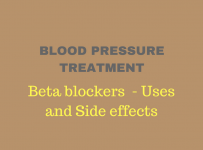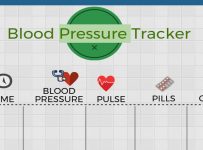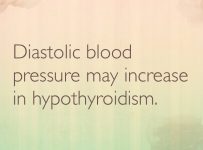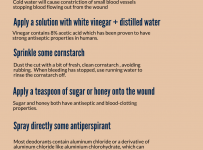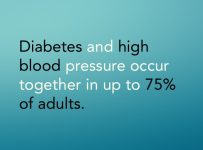Premenstrual syndrome (PMS) is a group of symptoms that occur before the begining of every period. It has been found to rise the risk for high blood pressure before the 40 years of age. The women in this age group with PMS, are 3 times more likely to have high blood pressure, compared to women of the same age who do not have PMS. This risk is present even for women who are active, not smoking, have normal weight and have no family history of high blood pressure.
Symptoms of Premenstrual Syndrome
Emotional:
- Bad mood
- Tension and anxiety
- Crying for no reason
- Mood swings
- Food cravings
- Bad sleep
- Poor concentration
Physical:
- Fatigue
- Headache
- Muscle or joint pain
- Fluid retention and weight gain
- Abdominal bloating
- Breast tenderness
- Constipation or diarrhea.

Premenstrual Syndrome Increases the Risk for High Blood Pressure
High blood pressure is a strong predictor of heart attack, stroke, kidney disease and heart failure in women. It shares many similar pathogenic mechanisms with premenstrual syndrome. Obesity, calcium intake and glucose blood levels constitute a connection between the two diseases. Apart from these, the frequency of use of oral contraceptives and antidepressant medications is higher among women with PMS. Both of those types of drugs could affect blood pressure. That’s a reason that women with PMS are at higher risk of developing hypertension.
If you suffer from PMS you must beware of the symptoms and signs of blood pressure disease because more than half of women younger than 40 years old remain untreated.
Causes of Premenstrual Syndrome
- Estrogen to Progesterone imbalance.
- Altered sodium metabolism that leads to fluid retention.
- Nutritional deficiencies.
- Stress (due to increased cortisol).
- Glucose intolerance.
Prevent High Blood Pressure in PMS
- Control you body weight.
- Keep blood glucose between normal limits.
- Track your blood pressure.
- Do not overuse painkillers, particularly non steroidal anti-inflammatory drugs like Ibuprofen.
- Avoid salty foods. They will increase your bloating and fluid retention also.
- Eat calcium containing foods. In case of dairy products intolerance, opt for alternatives like soy milk.
- Avoid alcohol and cigarette smoking.
- Do not drink more than 1-2 cups of coffee per day.
- Prefer herbal tea instead of black tea.
In 1999, the the College of Pharmacy, University of Illinois at Chicago established the Botanical Dietary Supplements Research Center, to investigate botanical dietary supplements for women’s health. Research has focused on botanic dietary supplements that may improve women’s health and quality of life, in the areas of menopause, premenstrual syndrome, and persistent urinary tract infections. Premenstrual syndrome is considered a condition amenable to botanical treatment.
Here are some natural alternatives to ease premenstrual symptoms without affecting your blood pressure.
1. Chamomile
How it works:
Effect: Acts to relieve muscle spasm and anxiety.
2. Dandelion
How it works: Increases urination and decreases swelling.
Effect: Relieves fluid retention.
3. Cramp bark and Black haw
How it works: Chemicals in cramp bark seem to decrease muscle spasms. These chemicals might also decrease blood pressure and lower heart rate. Don’t confuse cramp bark with black haw (Vibernum prunifolium) which is also referred as cramp bark.
Effect: Acts as uterine relaxant, to releave menstrual cramps.
4. Maca
How it works: Not known. Contains fatty acids and aminoacids.
Effect: Helps to restore hormonal imballance. Early research suggests that relieves menstrual symptoms and improves sexual dysfunction in women taking antidepressants.
5. Scullcap
How it works: Chemicals in skullcap are supposed to prevent inflammation. Other chemicals in skullcap could cause sedation.
Effect: Prevents hot flushes and menstrual cramps.
6. Red Raspberry Leaf (Rubus idaeus)
How it works: Contains many antioxidants that and other chemicals that relax blood vessels. It can cause muscle relaxation or contraction, depending on the quantity.
Effects: Reduces premenstrual and menstrual pain.
7. Dong Quai (Angelica sinensis)
How it works: Dong quai root affects estrogen in animals. It is not known if these same happens in humans.
Effect: A specific product containing dong quai and chamomile (Climex) seems to reduce menstrual pain and hot flushes in menopausal women.
8. Wild Yam (Dioscarea villosa)
How it works: Wild yam contains a chemical from which synthetic steroids can be made in the laboratory. The body can’t make estrogen from wild yam.
There is no evidence that it relieves menstrual symptoms.
9. Valerian (Valeriana officinalis)
How it works: Acts as a brain and central nervous system sedative. Also prevents the smooth muscle contraction of the uterus (because it inhibits Prostaglandins), leading to pain relief.
Effects: Research suggests that taking valerian extract 2 times daily for 3 menstrual cycles, could reduce the severity of symptoms of premenstrual syndrome and the need for other pain killers during menstruation.
10. Dandelion (Taraxacum)
How it works: Increases urination and decreases swelling.
Effect: Prevents fluid retaining.
11. Chaste Tree Berry (Vitex Agnus Castus)
How it works: It seems to affect certain hormones that regulate menstrual cycle.
Effects: Relieve of symptoms such as breast tenderness, swelling, cramps, food cravings and irritability.
12. Fennel (Foeniculum vulgare)
How it works: Fennel might relax large bowel and decrease respiratory secretions.
Effects: Fennel extract might relieve pain during menstruation.
13. Saffron
How it works: Not known.
Effects: Research shows that taking a specific saffron extract improves symptoms of PMS after two menstrual cycles.
14. Black Cohosh
How it works: This root contains chemicals that strengthen the immune system and reduce inflammaion. Other chemicals in black cohosh root might affect nerves and brain.
Effects: It acts similar to estrogen. Relieves menstrual cramps during PMS and premenopausal symptoms. Do not take black cohosh if you have high blood pressure.
Read more: Natural Remedies for High Blood Pressure

